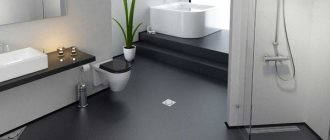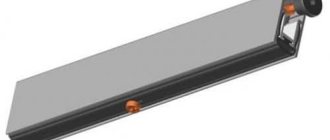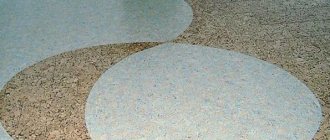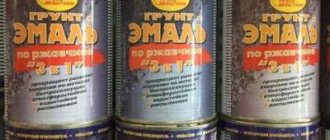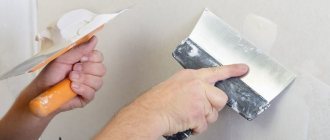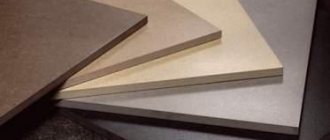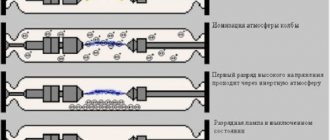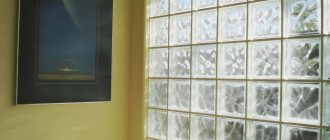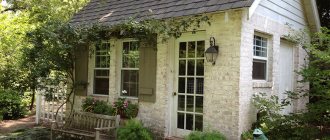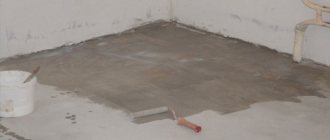The modern market of construction and finishing materials offers a huge range of floor coverings with a wide variety of properties and characteristics. Both modest budget options and expensive luxury finishes are available for sale.
Types of floor coverings
After reviewing the information presented below, you will get a complete understanding of the main types of floor coverings and will be able to make the most correct choice.
Linoleum
Linoleum
Modern linoleum consists of six layers
One of the most common types of flooring. Materials for household, semi-commercial, and commercial purposes are available for sale. Classification is carried out in accordance with the strength indicators of linoleum. The best option for the home is semi-commercial rather than household linoleum - it is slightly more expensive, but lasts much longer.
What is the difference between commercial linoleum and semi-commercial
Advantages
- Resistant to moisture.
- Unpretentiousness and ease of care.
- No noise when walking.
- Impervious to rotting.
- Long service life.
Table of class and marking of household linoleum
linoleum
Flaws
- Demanding requirements for the foundation. The subfloor must be level - only in this case can you count on a long service life of the coating.
- Relatively low environmental friendliness. In this regard, linoleum, as an artificial material, is noticeably inferior to natural finishes.
- Low resistance to mechanical loads. The weight of a person and small interior items is supported by linoleum, but under the pressure of heavy furniture and large equipment, the material is pressed through.
- Weak resistance to temperature changes. Relevant for cheap and low-quality linoleum. This finish quickly becomes deformed and becomes cracked.
Table of characteristics of Tarkett linoleum (Tarkett)
Polyvinyl chloride coatings
Polyvinyl chloride coatings
Polyvinyl chloride coatings have a service life of up to 30 years
Available in the form of tiles and panels with an adhesive base and a locking joint. Also on sale are tiles mounted using third-party adhesive mixtures. Modern vinyl floors look more aesthetically pleasing and are characterized by significantly improved performance characteristics compared to their old Soviet-made counterparts.
Advantages
- Resistance to various types of loads.
- Easy to install.
- Resistant to moisture.
- Good sound insulation properties.
- Nice external texture.
- Large selection of colors and textures.
- Long service life.
PVC tiles. Specifications
Flaws
- Demanding requirements for the foundation. The subfloor must be level, otherwise over time all defects will appear on the vinyl. The humidity of the base should not exceed 5%.
- Demanding requirements for storage and storage conditions. Before use, vinyl must be given time to adapt to environmental conditions. In addition, the temperature intervals recommended by the manufacturer must be maintained during the finishing process and after its completion.
- Weak resistance to ultraviolet exposure. Relevant for cheap vinyl. Direct sunlight causes the color to fade and yellow spots to appear on the surface of the coating.
- Unnatural composition. Vinyl is a man-made material. When burned, it releases substances that are toxic to humans. At the same time, a cheap and low-quality coating makes them stand out even in a “state of rest.” When purchasing, be sure to ask the seller to present quality certificates.
PVC floor tiles
Types of floor coverings in an apartment
Today the market is filled with a variety of models and types that will suit every taste and budget. All of them will differ in characteristics, composition and place of use.
Floorboards
One of the simplest and most unpretentious coatings.
Boards are usually made from coniferous trees. They are coated on top with paint or varnish to protect them from abrasion, which must be renewed periodically. The advantages of plank flooring include environmental friendliness, durability and ease of maintenance.
The disadvantages are a very small selection and difficulty in painting the floor with high quality.
Linoleum
Perhaps linoleum is the most popular floor covering. It can be found in many apartments and houses. It is sold both in rolls (from 1.5 to 6 meters) and PVC tiles. Its thickness is usually from 1.5 to 5 mm.
There are three types: household, semi-commercial and commercial.
Household linoleum has the smallest thickness and is installed only in rooms where there is no intensive foot traffic.
Semi-commercial is harder and thicker than household, and more resistant to wear.
Commercial has the greatest thickness and strength among all linoleums, it is suitable for places with intensive foot traffic, and is resistant to chemical and mechanical influences.
Fix linoleum to the floor in 3 different ways:
- just using skirting boards,
- on double-sided tape;
- using special glue.
The advantages of linoleum boil down to the following: it has good moisture protection, it is easy to clean, there are no great difficulties in installation, it is not susceptible to rotting, it has a low cost among all floor coverings, a large selection of colors, and has a long service life of several decades.
The disadvantages are considered to be low ergonomics and often a long process of preparation for installation. In order for linoleum to serve for a long time, it is necessary to lay it on an absolutely flat surface. In addition, before fixing it, it should lie unfolded for several days to ensure maximum adherence to the base. It is also a less environmentally friendly material than wood. With large temperature changes it may crumble or crack.
Laminate
Laminate is MDF panels treated with special resins, with layers of paper glued to them, and varnished.
This product appeared on the building materials market not so long ago, but has already won a large number of buyers. By its color it imitates real wooden floors.
This coating is divided into several classes depending on the strength of the panels. Less durable and wear-resistant grades 21-23.
This laminate should be laid in living rooms. Classes 31-33 are stronger and more reliable; they are usually installed in hallways and kitchens.
Laminate has many advantages. This material is considered resistant to influences such as pressure, loads, and abrasion. There are no indentations left by heavy furniture. It tolerates high temperatures well and is fire resistant. Laminate flooring does not require careful maintenance, unlike parquet. Eco-friendly and hypoallergenic, as it is produced without harmful chemicals. A fairly simple procedure for laying laminate flooring. Suitable for covering underfloor heating systems. Service life more than 10 years. Sold at affordable prices.
However, there are also disadvantages. Not suitable for rooms with high humidity. It is advisable to treat it with a special waterproof solution or wax after installation.
Much preparatory work is required before installation. If the laying technology is violated, then the boards may swell or the surface may bubble.
If the surface is not leveled properly, the laminate will begin to creak.
Polyvinyl chloride floors
These coatings are in the form of soft elastic embossed materials. They consist of several layers. They have a long service life - about 30 years. They can withstand heavy loads and burn poorly.
In addition, the advantages of polyvinyl chloride floors include the fact that their strength is higher than that of linoleum or laminate. Their transportation is easy. They have good soundproofing and moisture-proof properties. Wide variety of colors and textures.
The disadvantages are that installation skills and a well-prepared surface are required. The seams may dry out over time. This is not a cheap material, and is not always on sale in small towns. If stored improperly, the tiles may become warped, which will cause difficulties during installation, so you must carefully check all packaging before purchasing.
Cork flooring
This is a completely environmentally friendly material, as it is made from cork tree bark in the form of compressed chips or veneer plates. Produced in the form of slabs or rolls. The covering is laid on an MDF panel and fixed with glue.
This type of flooring has many advantages . Cork floors have very good heat and sound insulation properties. They are resistant to deformation, so heavy furniture is not a problem for this type of coating. The coating does not slip and has a positive effect on the human musculoskeletal system due to its shock-absorbing properties. It is susceptible to exposure only to caustic alkalis, which are not used at home. Does not attract rodents and insects.
The main disadvantage is the high price. Heels, pet claws, and sharp furniture legs can damage the surface.
Due to the low thermal conductivity, it is not advisable to install a heated floor system under this coating. Not suitable for rooms with high humidity, as the MDF base may swell.
Parquet board and parquet
Classic flooring. Parquet is a valuable type of wood glued onto a wooden base and looks like small planks.
Laying occurs in a mosaic manner on a base that is prepared in advance. Fixed with glue or mastic.
The advantages certainly include the environmental friendliness and durability of the material. With the correct installation technology, parquet will last for decades.
The disadvantages are the high cost and small selection, limited to types of natural wood.
Carpet
Carpet is another popular type of flooring material. They may contain both natural and artificial ingredients. The latter are more common. Carpets can be purchased at affordable prices. Huge selection of colors. There are no difficulties in care. Also, rodents and moths do not show interest in them. Just like linoleum, carpet is produced in the form of rolls and tiles.
Their advantages include good sound insulation, which is provided by elastic and soft pile. The carpet is abrasion resistant.
The disadvantage is that carpets can fade in the sun. If there is high humidity, mold may form. Due to the accumulation of dust in the pile, frequent vacuuming is required.
Ceramic tile
Ceramic tiles have long been used by mankind as flooring.
Most often it is placed in rooms with high traffic and humidity. Today there are a huge number of ceramic tiles of different appearance. The differences lie in size, appearance, strength, water absorption, degree of slip, etc.
Most often it is placed in bathrooms and kitchens due to its certain characteristics. But recently they have often begun to install it in bedrooms and living rooms due to its good thermal conductivity, installing a heated floor system underneath it.
The advantages of ceramic tiles are their durability, moisture resistance, environmental friendliness, strength and ease of use.
Disadvantages and the presence of seams. If a heated floor system is not installed, then walking barefoot on such a surface will be cold.
Marmoleum
New to the flooring market.
This coating contains only natural ingredients: linseed oil, ground lime, wood flour and resins.
Available in the form of rolls, panels or tiles.
Marmoleum has a wide range of advantages . The most important of them is an environmentally friendly product.
It can be installed without any particular difficulties, and there are no special requirements for leveling the base as, for example, for laminate or linoleum.
Service life from 20 to 30 years. Resistant to fire, does not absorb moisture. To clean the coating, a damp cloth with a cloth is sufficient.
The main disadvantage is the fragility of the material when cutting. Therefore, the cut parts are hidden under the baseboards. At the same time, the material is hard, and this property increases over time, so it is given a high level of injury risk.
Polymer floors
This coating is also called self-leveling or liquid floors. Based on the components contained in the composition, they are divided into several types: cement-acrylic (the most environmentally friendly), epoxy, methyl methacrylate (the most expensive) and polyurethane.
This new type of coating is gaining great popularity. They are used not only in residential premises, but also in enterprises, trading floors, and sports facilities.
In apartments, self-leveling flooring can most often be found in the bathroom. They have an unusual 3D design on the floor.
A wide range of advantages helps to increasingly choose self-leveling floors. First of all, this is their appearance, beautiful and unusual. They are durable, resistant to moisture, fire and aggressive chemicals. They are easy to clean and wash.
However , the pleasure of having a self-leveling floor is quite expensive. Preparation of the base and the installation process itself require professional skills. And liquid floors consist entirely of artificial materials.
Cork coverings
Cork floor
How to lay cork flooring
Natural coating with high heat and sound insulation properties. The finishing is based on cork tree bark. Produced in roll and slab formats. Perfect for finishing floors in rooms that require environmental friendliness, silence and comfort.
Interlocking cork floor
Advantages
- High thermal insulation performance.
- Good sound insulation.
- Resistance to deformation influences. Even heavy furniture and equipment leave no traces on the cork floor.
- High shock-absorbing properties.
- No slipping.
- Normal tolerance to a variety of chemical influences, with the exception of aggressive alkalis.
- Resistance to various pests.
Types of cork coverings
Flaws
- High price. As a result, taking into account the costs of various additional materials and the work itself, the price of a cork floor is comparable to the costs of purchasing and laying good parquet.
- Low tensile strength. Sharp furniture legs, pet claws, heels and other similar things negatively affect the condition of the traffic jam.
- Low thermal conductivity. It will not work to use cork flooring in combination with a floor heating system, because... the “cork” simply will not allow heat to pass through.
- Tendency to swell when in contact with water. This point eliminates the possibility of installing cork floors in bathrooms and other rooms with high humidity levels.
cork floor
Individual characteristics of floor coverings in different rooms
Before moving on to a review of different types of floor coverings, you first need to consider what features the floors have in each individual room.
Every apartment or house begins with it. When you come home from the street, you bring dust, dirt and sand on your shoes. Especially on rainy days or off-season. All these fragments can mechanically cause damage to the floor covering. Therefore, the material that lies on the floor in the hallway must be durable, with high wear and moisture resistance.
Hallway.
The main requirement for flooring in a bathroom is high moisture resistance, since this is the room with the highest humidity in the entire apartment and most often there are puddles of water on the floor.
Bathroom and toilet.
. Here, as in the bathroom, the floor covering must be highly resistant to water. At the same time, it must be durable and easy to clean, since grease and dirt on the kitchen floor are a common occurrence.
Kitchen
. The covering on a balcony or loggia must be resistant to temperature changes; if there is no glazing, then it must be frost-resistant.
Loggia and balcony
. These include the living room, hall, dining room, bedrooms, children's rooms. It is desirable that the floor covering has such characteristics as durability and environmental friendliness. For children, ergonomics are also added.
Living rooms
In addition to the main characteristics, it is also worth paying attention to the price categories for each coating and ease of installation.
Laminate
Laminate in the interior
A panel made from fiberboard and supplemented with several layers of thick paper. A texture is applied on top of the paper (the most popular option is imitation parquet), and protective materials are applied on top of it. The production technology ensures that the panels are resistant to abrasion, sunlight, various types of damage, deformation and contamination.
Laminate classes
Laminate is relatively easy to install and has a long service life. The only limitation is that the panels cannot be installed in bathrooms and other rooms with high humidity levels. The installation technology requires preliminary laying of a special substrate.
Which laminate to choose
Laminate classification
Advantages
- Resistance to external influences.
- Good tolerance to elevated temperatures.
- Relatively easy to care for.
- Environmental Safety. The panels contain no substances that can cause harm to human health. The material does not accumulate bacteria, it does not cause allergies and is perfect for finishing the floor even in a children's room.
- Easy to install.
- Can be combined with underfloor heating systems.
- Long service life.
- Relatively affordable price.
Laminate in the interior
Flaws
- Poor resistance to moisture. The material is not recommended for use even in kitchens. If you decide to decorate your kitchen floor with this material, give preference to its adhesive variety.
- Risk of bubbles and other swellings if installation technology is violated.
- Creaking when walking when laid on an insufficiently leveled subfloor.
- Low quality cheap varieties.
laminate
Ceramic coating
Ceramic coating
Ceramic floor tiles
Ceramic floor tiles can be used in various types of living spaces
One of the most popular materials for flooring. The tiles are especially suitable for tiling floors in rooms with heavy traffic and high humidity. A huge range of tiles are available for sale, differing in size, design, strength and a number of additional characteristics.
In private house construction, ceramic coatings are most often used in bathrooms, as well as hallways, toilets and kitchens. In general, you can choose tiles that will fit perfectly into the interior of any room, but in bedrooms, living rooms and other similar rooms, it is better to combine ceramics with floor heating systems, otherwise it will be cold.
Advantages
- The widest selection of design solutions.
- Almost limitless scope for the implementation of a wide variety of ideas. Using tiles, you can create unique compositions and visually change the proportions of the room.
- Strength.
- Easy to care for.
Flaws
- Labor intensive installation.
- Presence of seams. It will not be possible to completely remove them. The width of the seams directly depends on the skill of the installer.
- Cold. Walking on such material with bare feet is not an acquired taste. To be comfortable, ceramics must be combined with a heated floor system, which leads to additional costs.
KERAMA MARAZZI catalogues. Download in PDF format
2015 Ceramic granite
2015 English collection
Hotels
KERAMA MARAZZI
ceramic floor tiles
What flooring to choose for an apartment
The choice of floor finish is determined not only by its appearance and price. It is important to consider the conditions under which the material will be used. To make choosing easier, we have compiled a table comparing floor coverings and recommendations for their use.
| Moisture resistance | Soundproofing | Thermal insulation | Strength | Installation | Flaws | Where to lay the bed | |
| Laminate | average | low | average | average | simple | sensitivity to moisture, “noisiness” | bedroom, living room, children's room |
| Parquet | low | good | high | average | difficult | difficult maintenance, regular special treatments, expensive and complex installation | all rooms except rooms with high humidity |
| Parquet board | average | good | good | high | simple | sensitivity to moisture | all rooms except the bathroom and bathtub |
| Engineering board | good | good | good | high | relatively simple | complex installation using adhesive method | any room |
| Marmoleum | high | good | good | high | simple | fragility | any room |
| Ceramic tile | good | good | low | sufficient | difficult | shock sensitivity, cold surface | bathroom, bathroom, kitchen, bedroom or children's room using a heating system |
| Carpet | low | good | good | low | simple | complex care | children's room, bedroom, living room |
| Self-leveling floor | good | good | good | high | difficult | complex installation | bathroom, bathroom, kitchen, hallway |
| Quartz vinyl tiles | good | average | average | high | relatively simple | Before laying the base must be carefully leveled | any room |
| Cork | low | good | good | low | relatively simple | sensitivity to moisture and mechanical damage | bedroom, children's room, living room |
The choice of floor finishes is very large. You can choose the right material only after comparing different options.
Carpets
Carpets
Variety of carpets
This popular type of flooring is characterized by a relatively affordable cost, ease of installation and an almost limitless range of design solutions. Modern carpets are not of interest to rodents, insects and other pests; they are easy to care for and durable.
Natural carpet
Carpets made from acrylic, wool, polypropylene, nylon, silk and many other materials are available for sale.
Carpets, made in Türkiye
Advantages
Among the advantages of modern carpeting, the following characteristics should be noted:
- resistance to various adverse effects, including abrasion;
- wide selection of colors and designs;
- low creasing;
- decent sound insulation when using carpets with soft and elastic pile.
Flaws
If carpets have disadvantages, namely:
- poor resistance to direct sunlight. This is especially true for cheap models. Carpets lose color and generally presentable appearance;
- poor tolerance to exposure to water and use in conditions of high humidity;
- tendency to accumulate dust between the villi. If you prefer carpet flooring, be prepared to use a broom and vacuum cleaner often.
carpet
Concrete base - reliability above all
No matter how many new modern materials appear on the market, experienced builders prefer a time-tested concrete screed for pouring a subfloor. Neglecting their own convenience, despite the time it takes, they install floors using the old-fashioned method, because the reliability of the technology is known to everyone and has long been tested.
Mixtures for laying a concrete base are made independently from cement, sand, crushed stone, water or purchased ready-made:
- cement , filled with expanded clay, stone chips, various plasticizers;
- gypsum , used only in dry rooms, ideal for laying board coverings;
- sand concrete , the mixture for pouring concrete floors should not exceed grade M 300.
To obtain a decorative coating, the screed is sanded and coated with a thin layer of polymer composition. Epoxy, polyurethane, and methyl methacrylate mixtures not only give floors an aesthetic appearance, but also significantly strengthen the concrete surface.
In order to obtain a reliable and durable floor covering as a result of installing concrete floors, you should adhere to the technology and know some of the subtleties.
Parquet coverings
Parquet coverings
A classic version of expensive and high-quality flooring. The performance characteristics and appearance of the material directly depend on what kind of wood was used for its manufacture. Homes with wooden floors are always warm, comfortable and cozy.
Parquet
Advantages
- Excellent appearance.
- Long service life.
- Complete environmental safety.
- Low thermal conductivity.
Flaws
- Tendency to deformation. In summer, wood expands; in winter, on the contrary, it shrinks. In view of this, when laying the panels it is necessary to leave technological gaps.
- High price. High-quality parquet is noticeably more expensive compared to other types of coatings. However, it has to be changed much less frequently, which fully compensates for the high cost.
parquet
Ceramic tile
Another classic floor finishing option. Most often, the material is used for arranging floor coverings in kitchens and bathrooms.
Ceramic tiles - environmentally friendly and durable
The positive aspects of tiles include:
- Resistant to chemicals, water, ultraviolet radiation and abrasion.
- Wide range of shades and sizes of products. Materials are also produced that imitate the color and texture of natural wood, stone and others.
- Easy to care for.
- Health safety.
Tiles are considered an almost ideal option for floors in the house, but the material is cold, which makes it unpleasant to walk on barefoot. Some types become slippery when wet, and the tiles are also quite fragile and easily crack when hit or dropped by an object.
Polymer coatings
Self-leveling floor
Decorative floor 3D. Volumetric image on your floor
This category includes self-leveling floors, loved by many. The coating can be made on a cement-acrylic, epoxy, as well as polyurethane and methyl methacrylate base. Suitable for use in a wide variety of spaces. In residential buildings and apartments, 3D floors based on polyurethane are most often used. The compositions fit perfectly into the interiors of bathrooms and kitchens. They are characterized by aesthetics and exclusivity of appearance, high durability and long service life.
Materials for the installation of polymer floors
Advantages
The main advantages of self-leveling floors include the following characteristics:
- resistance to high humidity;
- attractive design;
- long service life;
- good tolerance to chemical influences;
- high adhesion properties;
- resistance to fire, temperature changes;
- excellent hygiene;
- ease and unpretentiousness in care.
Self-leveling floors 3d photo
Flaws
The material also has its weaknesses, namely:
- high price;
- comparative difficulty of dismantling. Over time, even the most beautiful 3D floor can get boring for the owner, and considerable efforts will have to be made to remove the coating;
- demands on the subfloor;
- complexity of arrangement.
self-leveling 3d floor
Cost of different coatings
For many buyers choosing the appropriate finishing option, the deciding factor is the cost of the material. Of course, this point also needs to be taken into account, which is what you are asked to do using the following table.
Table. Average prices for flooring
| Flooring | Prices, rub/m2 |
| Linoleum | 100-700 |
| Polyvinyl chloride coatings | On average from 1000 |
| Cork covering | On average from 1600 |
| Laminate | 170-1250 |
| Tile | 300-1500 |
| Carpets | 70-2000 |
| Parquet | 1000-2600 |
| Self-leveling floors | On average from 800-1000 |
Now you are aware of the key characteristics, advantages, weak qualities and average prices of the most popular types of floor finishes. The information received will help you think carefully and make the best choice.
When choosing a floor covering, it is important to balance environmental characteristics, health concerns and the cost of the covering
Good luck!
